< Cab >
In September, I will move to Taiwan alone for business. I gave up construction
of locos because it is difficult to set up a workshop in an apartment abroad.
I'm sorry I stop the report for several years. I promise to restart construction
when I will come back to Japan.
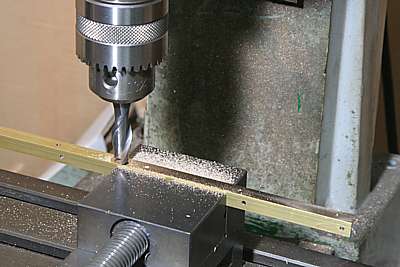
Front and side plates of the cab are made of 1.5mm laser-cut steel plates. They are assembled with brass angles. Before using the angles I trued up their square by end mill.
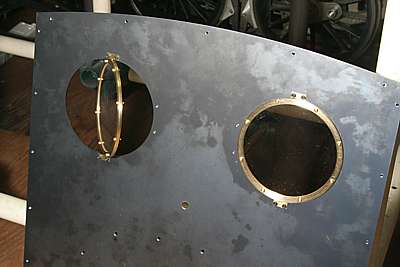
The cab windows can be rotate in horizontal direction. I explained how to make them.
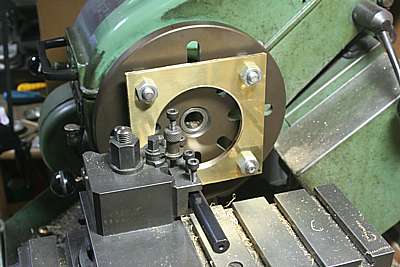
The window consists of two 1.5mm brass rings that keep 1.5mm clear acryl disk between them. I prepared four square plates with center large holes cut by fret saw. The holes are finished in the lathe. Each hole has a step of 0.75mm depth to hold the acryl disk.
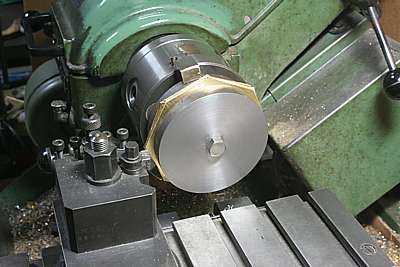
After cutting out the outer excess part, outer edges are turned in the lathe. I employed a pair of steel disks to hold the job. The steel disk in three-jaw has a step to center the inner hole. Another disk is just a plane disk. The job is fixed between the disks by a center bolt.
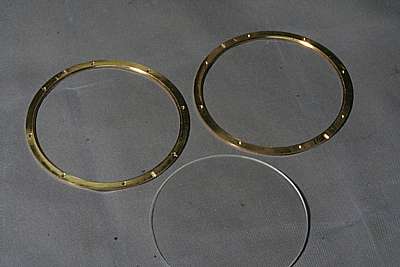
Every pair of frame ring is gathered with eight screws in each. At the top and bottom poles, hole for rotating pins are drilled. The acryl disk is cut by fret saw and finished by fine file.
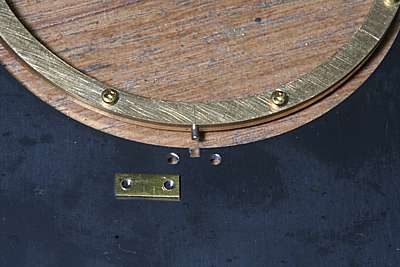
The rotating pins are made of 1.6mm hard stainless steel wire for coil springs. Holes for windows in the cab front plate have notches for the pins at their top and bottom. The pin will be in the notch and secured with small brass plates from the front and back.
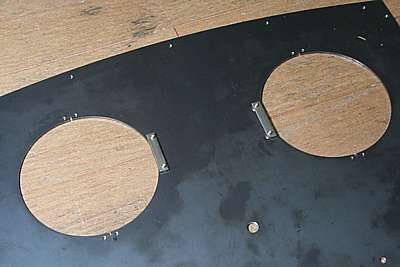
In order to limit the rotating angle, I put stoppers of steel band from the back of the cab hole.
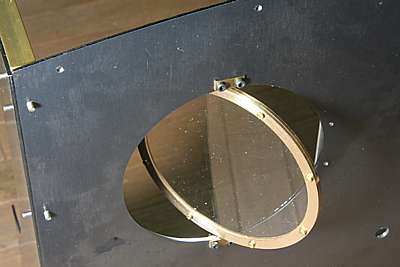
Lengths of the pins are adjusted in order to keep the windows at dead centers of the cab holes.
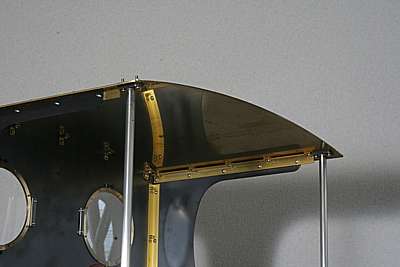
The cab roof is made of 1.5mm brass plated bent by the bending roll. It is fixed on the cab with brass angles. The back end of the roof is held by round rods.
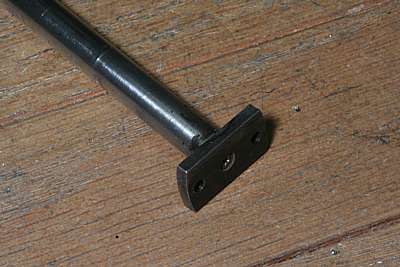
The round rods are made of stainless steel. Small plates to fix the rods under the roof are silver soldered at the top of the rods. The rods have screwed holes at their bottom. The bottom is fixed on the running board with a bolt under the steel angle that holds the running board.
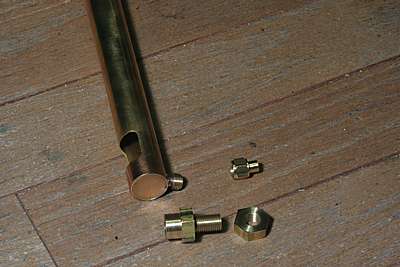
The whistle is OS product. It is mounted on the cab front plate. I made a mounting nipple and a nut.
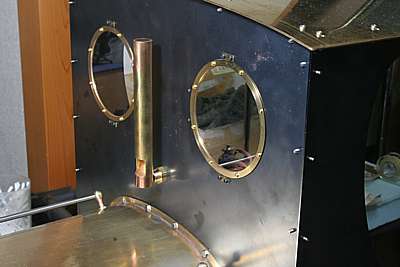
The whistle is hold at its bottom.
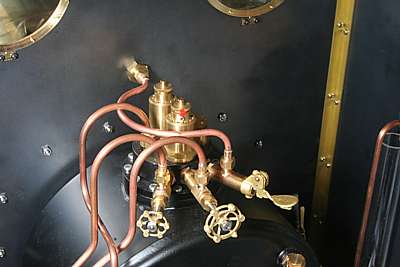
The whistle tube is connected from the whistle valve in the steam dome.
The loco is close to completion. The remained parts are saddle tank tubes and ash pan.
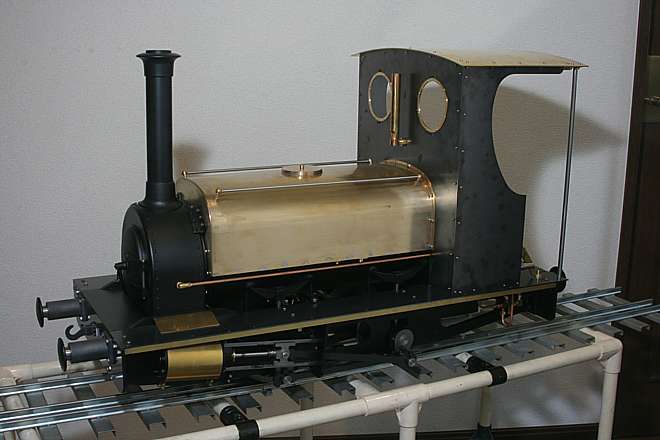
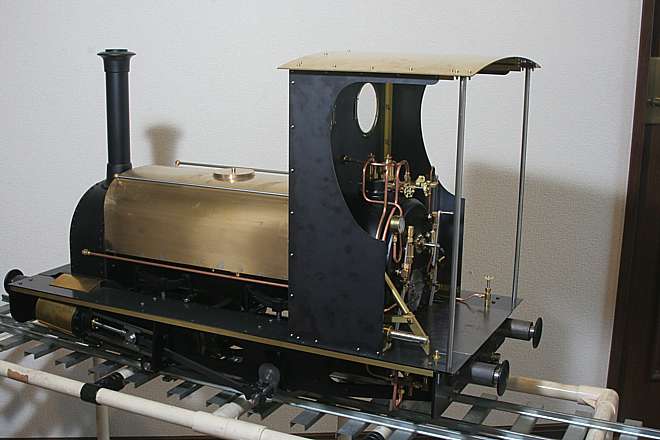
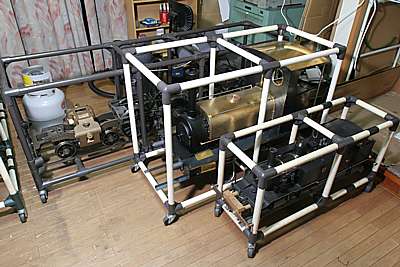
I made a carrying case for Hunslet. The photo shows size comparison among
Hunslet, C53 and William. I will leave these locos in Japan.